Many birds are insectivorous and omnivorous, meaning they feed on various insects, including bees. Although this is not common for all birds, several bird species find bees an extreme delicacy they love to have in their diet.
You probably wonder how that is possible as bees can sting and be hard to catch, so we want to provide more details about these birds and their hunt for bees.

Why do Birds Eat Bees?
Bees are an excellent source of protein, and they’re abundant, making them excellent prey for birds. Some birds also consume their honeycombs and larvae, so bee hives are an attractive spot they would feed.
On the other hand, there are birds whose first food source might not be bees, but if they appear nearby and seem easy to catch, the birds will try to eat them. Of course, this is not typical for all birds.
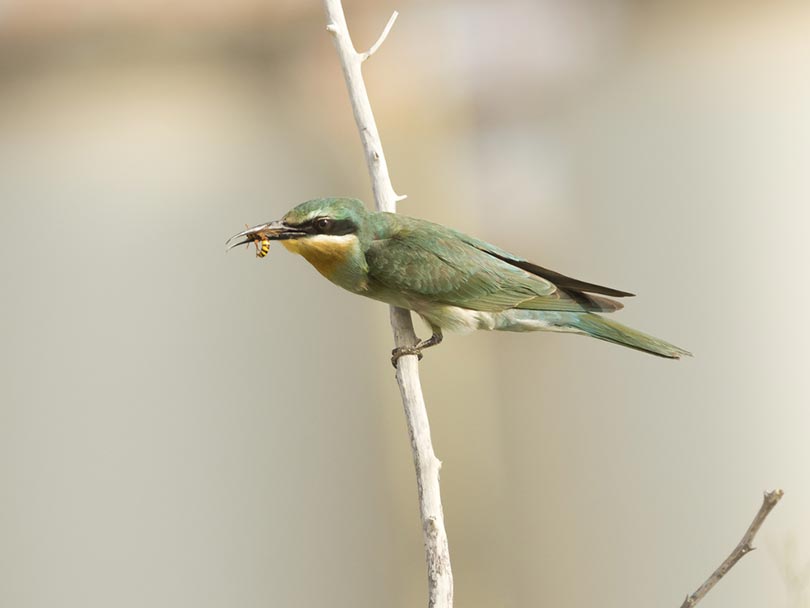
How do Birds Catch Bees?
Birds catch bees while in flight, as that’s the easiest way to hunt them down. Bees are small and fast, making them difficult prey, but birds possess all the skills to catch them successfully. Birds typically glide up to bees to catch them, although some prefer to grab them from branches when they’re steady.
Once a bird catches a bee, it typically breaks its head by knocking it to the ground, removing the sting and its toxins before consuming it.
Do Birds Get Stung When They Catch Bees?
Bees have a defense mechanism that makes them sting when they feel in danger. That’s why it’s common for a bee to sting a bird that attacks it. However, as birds typically attack bees when alone and not in the nest, one sting from a bee won’t harm the bird or prevent it from eating it.
Birds have a plumage that prevents the sting from reaching the inner parts of their bodies, so single bee stings are not lethal for them. If a bird attacks a whole bee nest, which rarely happens, it could potentially die as it would become a target for all the bees inside. This would be the only situation where the bird could die if it gets stung multiple times.
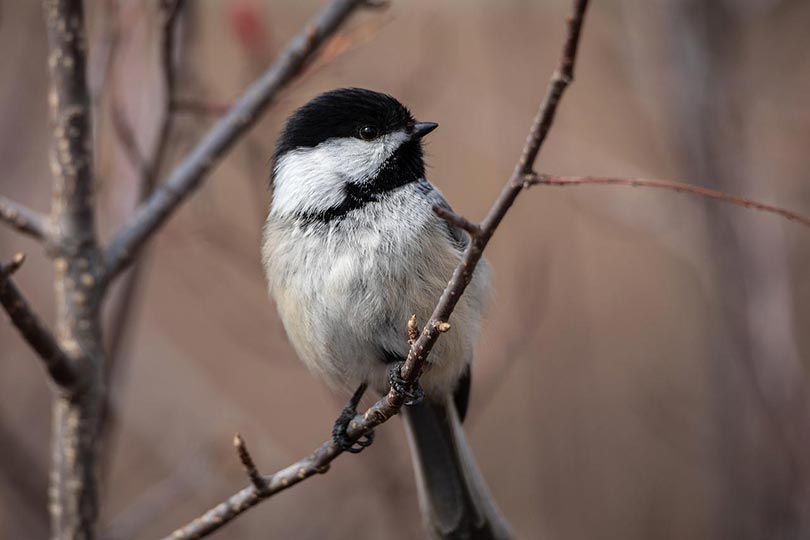
 Which Birds Eat Bees?
Which Birds Eat Bees?
Birds have different preferences when it comes to food, which is why bees are not considered a delicacy for all birds. As not all birds feed on bees, we want to provide a list of birds that consume them, along with some of their characteristics.
Bee-Eater
Bee-eaters are among the rare birds that feed on bees as a part of their regular diet. When they hunt, they try to catch bees mid-air, and they patiently wait for the perfect opportunity. Their excellent eyesight helps them see bees even from far away.
If the bee they are attacking is large, they’ll likely smash it on the ground to kill it, while they devourer smaller bees while flying.
Honey Buzzard
These birds consume bees and wasps daily as their primary food source. They are commonly found in Asia, Africa, Australia, and southern Europe.
Bee-eaters consume bees while in flight and won’t attack them when sitting on branches. Unlike other bee-eating birds, this species also attacks hives and isn’t afraid to hunt multiple bees at once. They have long tails they use to break the hives, reaching for bees, their larvae, and honeycombs. Due to their feathers, they are protected from getting stung.
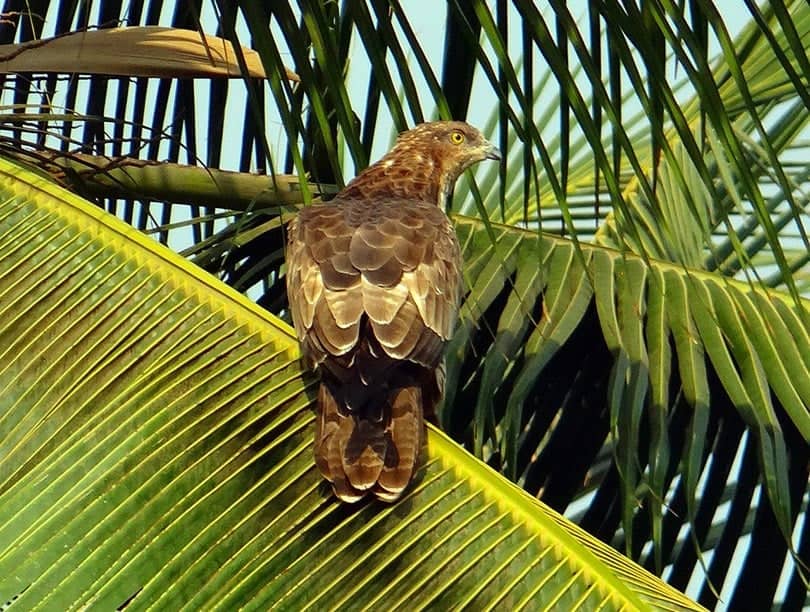
Chickadee
The chickadee is a small songbird native to the US, Asia, and Europe. While they consume berries and seeds, they also love to eat insects such as bees and wasps. Although it’s not too common for them to hunt bees, if they notice them nearby, chickadees will attack the bees during flight.
They also do the same with caterpillars, spiders, and other insects, depending on the most available option they have nearby.
Sparrow
Sparrows are small birds you can frequently encounter in forests, gardens, and meadows. They feed on various insects, and they will occasionally eat bees and wasps. Unlike other birds that eat bees, sparrows don’t catch them in flight. Instead, they stalk the bees from the ground, waiting to attack. Once the bee lands on a plant or the ground, a sparrow will attack and grab it with its beak.
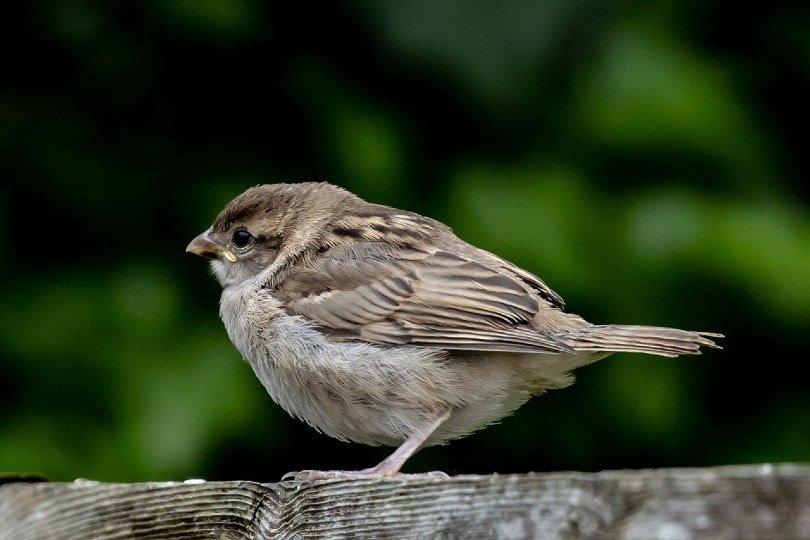
Summer and Scarlet Tanager
Summer and Scarlet tanagers eat insects like moths, beetles, grasshoppers, and bees. They are widespread throughout central and eastern America, while they migrate to Mexico and the southern USA during winter.
They observe bees from perches, catch them in the air, and then return to the perch where they consume the bees. Like most bee-eating birds, tanagers will rake the bee on the ground to remove its stinger and release the toxins.
Northern Cardinal
The Northern Cardinal is a widespread, bright songbird that occasionally feeds on bees as they pursue food from the most accessible source they can find. You can find them throughout Canada to Guatemala, while in the US, they’re commonly found from Maine to Minnesota and Texas. There are also introduced species of these birds in Bermudas and Hawaii.
Although attacking hives is not typical for birds that consume bees, Northern Cardinals will attack a hive to eat as many bees as possible. They do that more frequently during breeding as they need more protein in their diets.

Purple Martin
The Purple Martin is a large, swallow bird you can typically encounter in the western areas of the USA. There are also smaller populations living near the Pacific shore and Mexico. During winter, these birds migrate to South America.
These birds are agile, making them excellent hunters and turning bees into easy prey. They will attack bees during flight while they try to confuse them by flapping their wings rapidly and in different movements.
Kingbirds
These birds are constantly looking for new food sources and ways to add more protein to their diet. During feeding periods, they like to consume a lot of insects, and they lurk around flowers to find insects nearby.
Although bees are not their primary food source, if kingbirds notice a bee on a flower, they will swoop down to grab the bee with their beaks.

 Do Bees Feel Threatened by Birds?
Do Bees Feel Threatened by Birds?
Bees can sometimes feel threatened by birds, although that’s not always the case. Since there are birds that consume bees occasionally, they don’t break or attack hives, which is why bees are not threatened.
However, bees do feel threatened by bee-eaters and honey buzzards that attack the whole hive instead of hunting for a single bee.
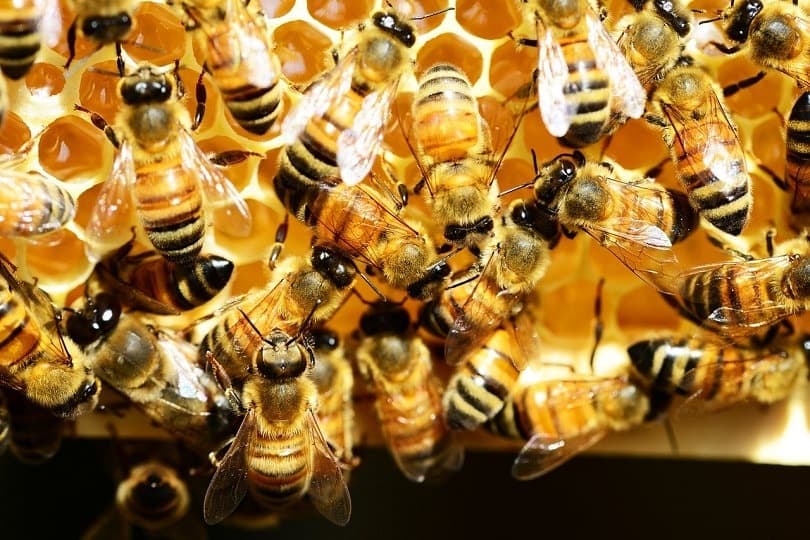

Final Thoughts
There are various bird species that consume bees, either occasionally or as a part of their regular diet. Bees represent an excellent source of protein, and although they can be hard to catch, they make the perfect prey.
See Also:
Featured Image Credit: Photorama, Pixabay
